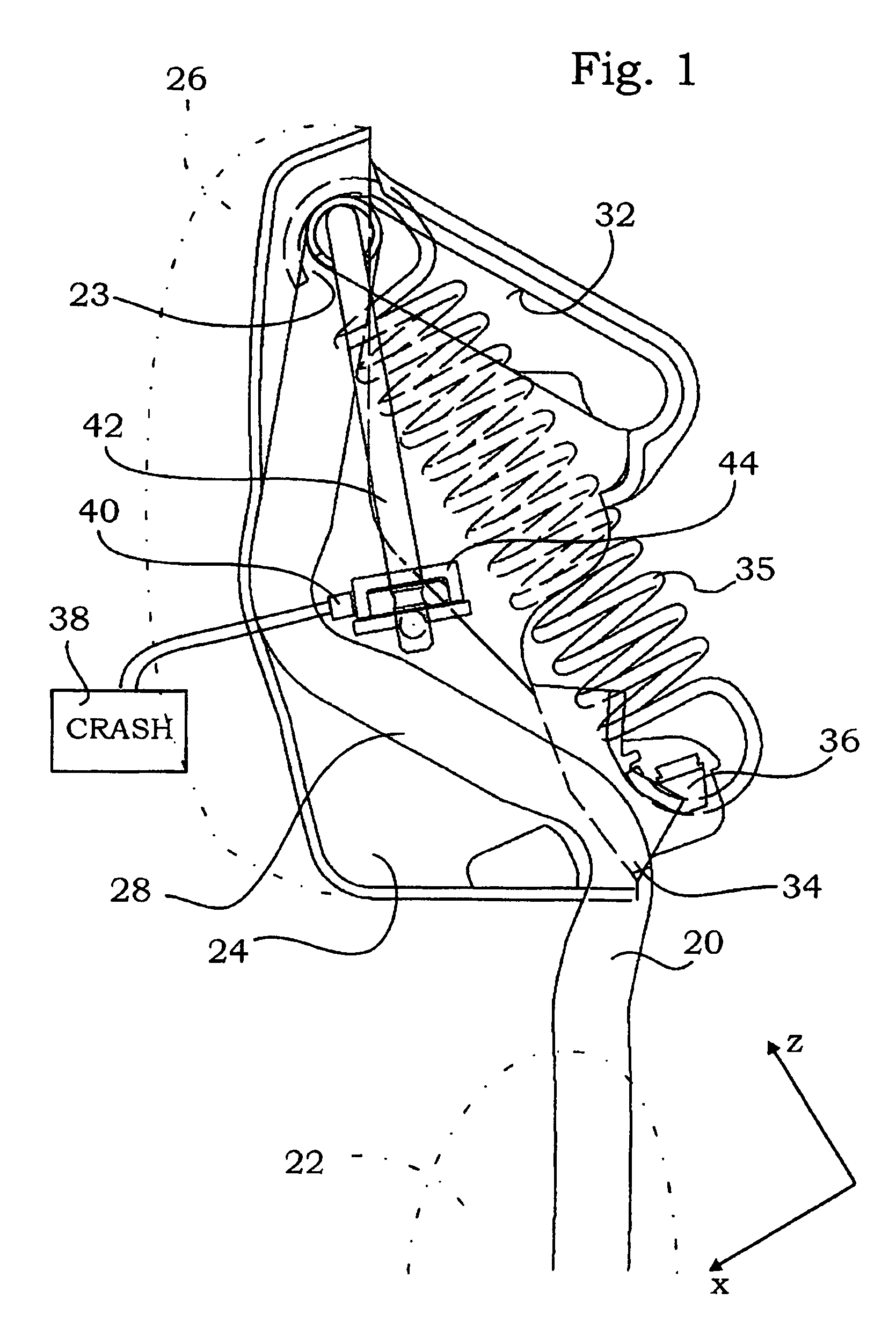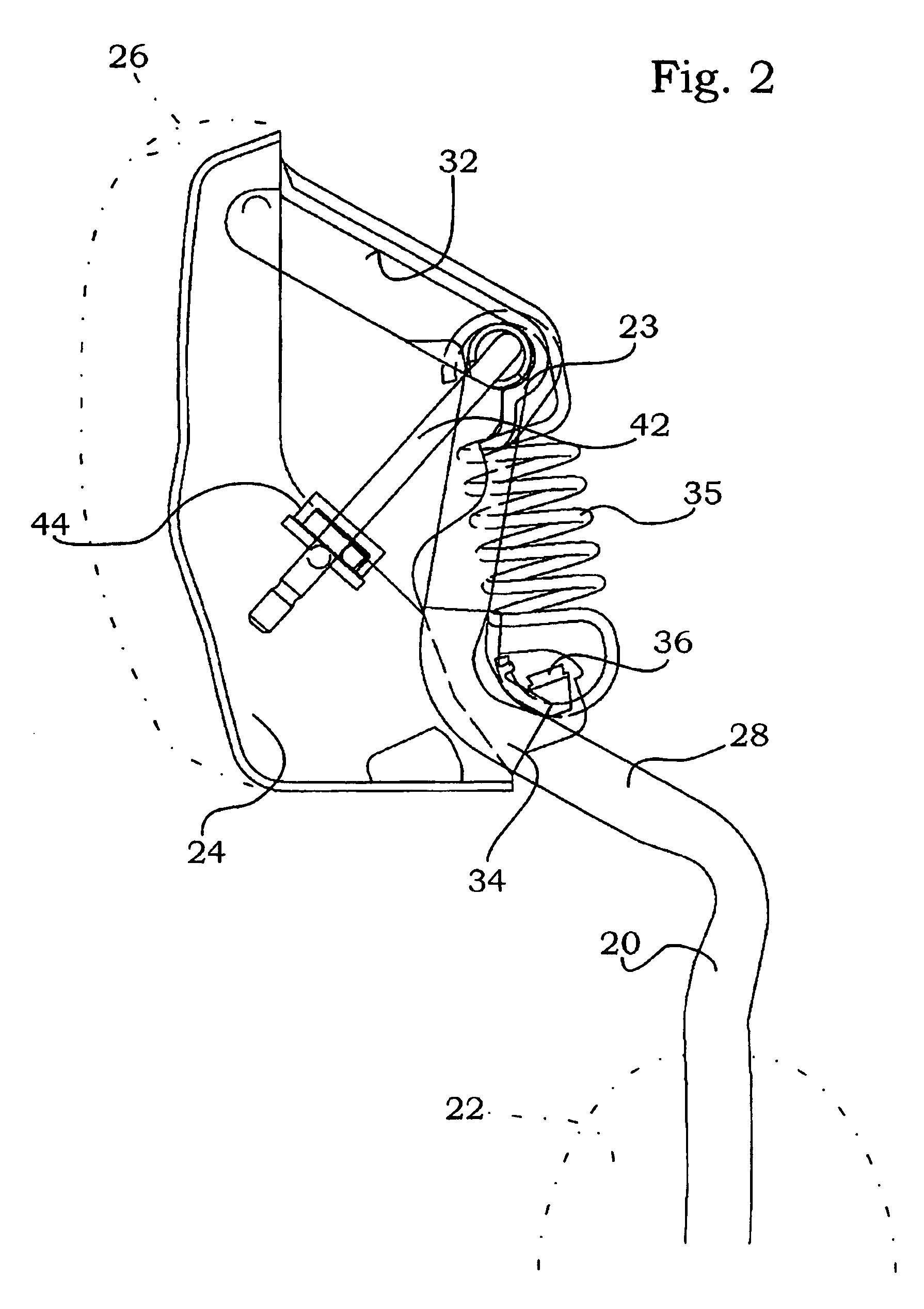Headrest for motor vehicle
a headrest and motor vehicle technology, applied in vehicle components, pedestrian/occupant safety arrangements, vehicle arrangements, etc., can solve the problems of inconvenient use, inconvenient use, untimely, etc., and achieve the effects of small force, reduced friction, and controlled large locking for
- Summary
- Abstract
- Description
- Claims
- Application Information
AI Technical Summary
Benefits of technology
Problems solved by technology
Method used
Image
Examples
Embodiment Construction
[0029]The headrest has two bars 20 that are retained in a seat back 22. In their uppermost region, the bars 20 are joined by a crossbar 23 to form a generally U-shaped one-piece member. Said U-shaped one-piece member belongs to a first structural component. The U-shaped member carries a supporting body 24 which, in the exemplary embodiments, is substantially made from a plastic part. This supporting body 24 will be discussed in further detail herein after. Finally, the headrest typically has a padding 26 which is illustrated in FIG. 1 and is carried by the supporting body. Supporting body 24 and padding 26 belong to a second structural component that is movable with respect to the first structural component. The movement becomes apparent when comparing e.g., the FIGS. 1 and 2.
[0030]The bars 20 have an inclined portion 28. In this portion, they deviate from the normal direction in which they protrude from the seat back 22 and which is oriented substantially in the z direction so as t...
PUM
 Login to View More
Login to View More Abstract
Description
Claims
Application Information
 Login to View More
Login to View More - R&D
- Intellectual Property
- Life Sciences
- Materials
- Tech Scout
- Unparalleled Data Quality
- Higher Quality Content
- 60% Fewer Hallucinations
Browse by: Latest US Patents, China's latest patents, Technical Efficacy Thesaurus, Application Domain, Technology Topic, Popular Technical Reports.
© 2025 PatSnap. All rights reserved.Legal|Privacy policy|Modern Slavery Act Transparency Statement|Sitemap|About US| Contact US: help@patsnap.com



